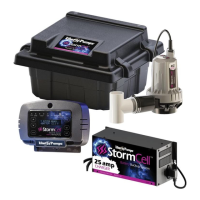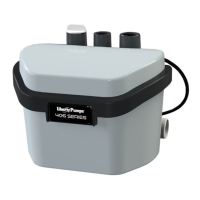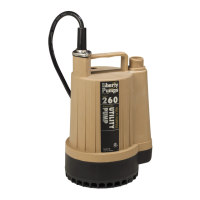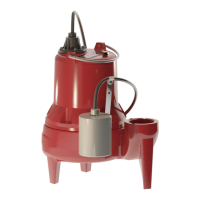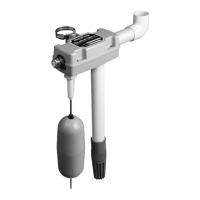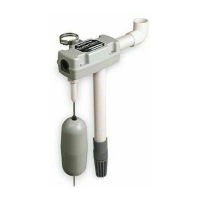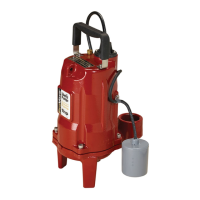16 | EN Copyright © Liberty Pumps, Inc. 2021
All rights reserved. 4414000E
Maintenance
Accidental contact with electrically live parts, items, fluid, or
water can cause serious injury or death.
Always disconnect pump(s) from power source(s) before
handling or making any adjustments to either the pump(s),
the pump system, or the control panel.
Pump Maintenance
Inspect and test the system monthly for proper operation:
1. Disconnect all power to each pump unit in the pit.
2. Check pump for debris and/or build-up that may interfere
with pump or float switch operation. The float switch must be
free to move without any restriction through its complete
travel.
3. Reconnect power to back-up pump.
4. Allow water level to rise to activate the back-up pump.
Alternately, add water to the sump to the “on” level for the
back-up pump.
5. Verify the back-up pump activates and empties water from
the basin.
6. Reconnect primary pump to wall outlet.
7. Verify the primary pump turns on and lowers the water to the
normal operating level and then turns off.
8. Verify GFCI is working properly. Use the test button to
confirm proper ground-fault protection.
9. Verify proper operation of system at conclusion of
maintenance.
Charger Maintenance
Inspect the charger monthly for proper operation:
1. Disconnect the charger from power while cleaning.
2. Clean the case and cords with a dry cloth. Inspect charger
condition.
Battery Maintenance
Follow the battery manufacturer’s recommendations for
maintenance and safe use of the battery. Liberty Pumps StormCell
batteries are maintenance free.
Inspect the battery monthly for proper operation:
1. Battery cover and terminals should be kept clean, dry and
free of corrosion. Battery vent caps must be secured to the
battery during use and charging period. Remove vent caps
only to inspect electrolyte levels or specific gravities.
2. When the battery or its terminals require cleaning, use only
biodegradable cleaner-neutralizer solutions that can be safely
applied and disposed of through a common sanitary sewer.
Other chemical-based solutions are often dangerous,
ineffective and cannot be disposed of in an environmentally
safe manner.
3. Inspect cable-to-terminal connections to ensure connections
are tight and free of corrosion. Battery cables must be intact
with no exposed wires.
Troubleshooting
Pump Troubleshooting
RISK OF ELECTRIC SHOCK
Problem Corrective Action
Pump will not run.
Check all wiring connections.
Check for low or defective battery.
Confirm that float switch is free to move up
and down.
Verify float switch is working properly.
Check for a blown fuse in the charger
wiring.
Pump cycles too
frequently.
Improper float switch setting. Adjust
distance between rubber stoppers on float
rod to achieve desired pump cycle. Refer to
Float Height Adjustment on page 8.
Primary check valve located between
discharge of primary pump and the
back-up sump pump tee is not installed or
is not working properly. Check all valves.
Install or repair as required.
Motor hums but
pump will not run.
Check for low or defective battery.
Pump runs but
pumps very little
or no water.
Confirm a check valve is installed and
functioning between the primary pump
discharge and the back-up sump pump tee.
Check all valves. Install or repair as
required.
Check for obstruction in discharge pipe.
Discharge pipe length and/or height
exceeds capacity of pump. See Table 1 for
pump capacity.
Check for low or defective battery.
Positive (+) and negative (–) battery wires
are reversed.
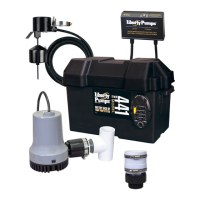
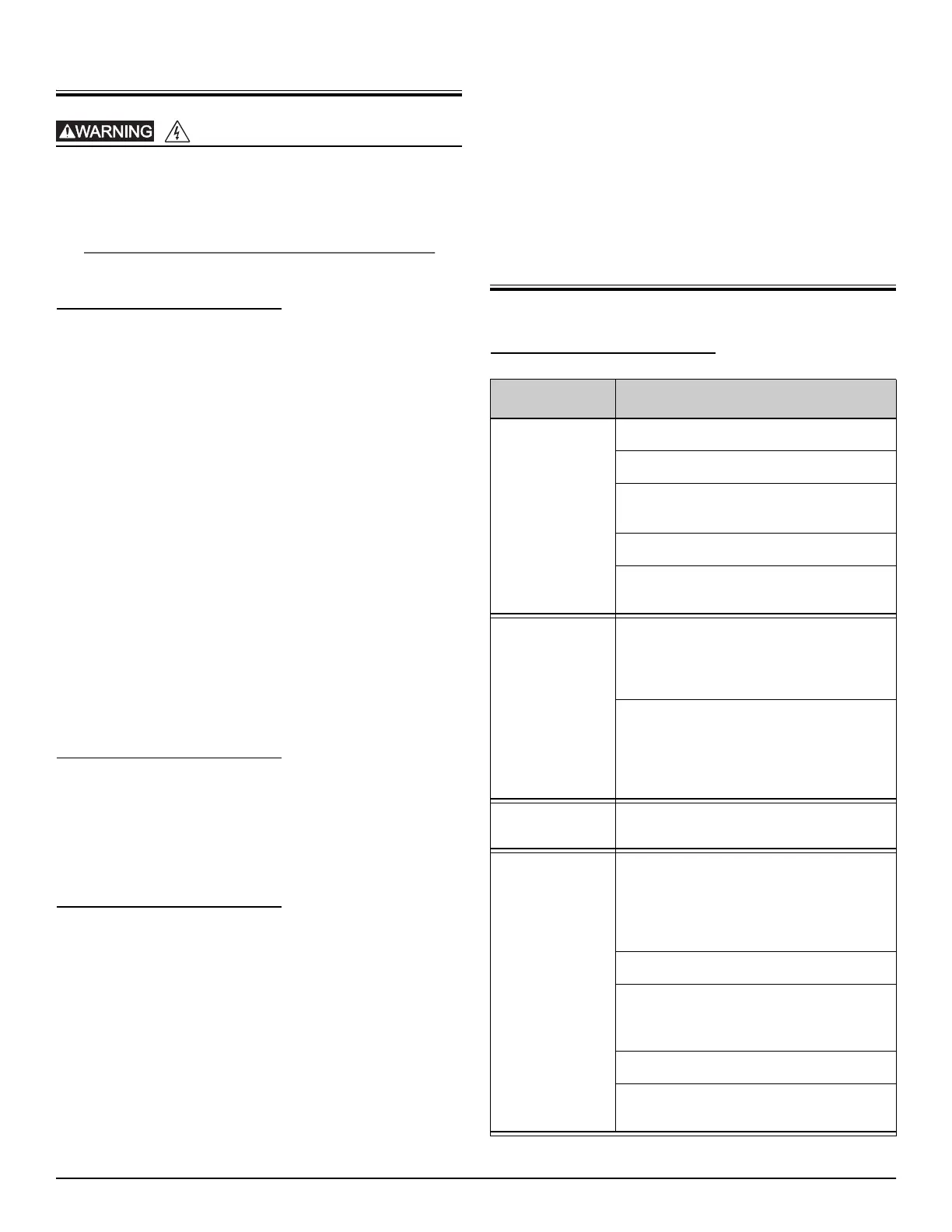